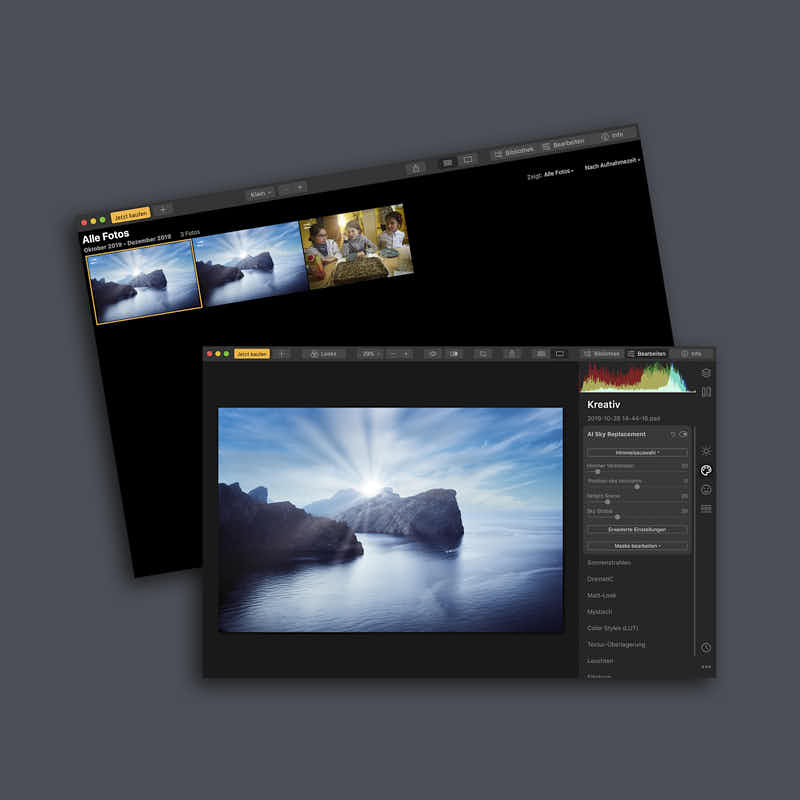

- #PIXELMATOR PRO VS LUMINAR AI HOW TO#
- #PIXELMATOR PRO VS LUMINAR AI SKIN#
- #PIXELMATOR PRO VS LUMINAR AI CODE#
It goes through every single thing inside of Luminar AI, every tool, every feature, every option, and it shows you what they do and how they do it. If this is your first time here, welcome, I'm really glad to see you here.Īnd if you're just new to Luminar, I'd want to let you know I've got a course called Luminar AI Elements. Hi, my name is William Beem, I'm a portrait photographer in Central Florida. So we're going to take a look at some tools in Luminar AI that help us add depth and dimension to our photos. I'm going to show you another way you can achieve some of the same results using local masking.Īnd I think sometimes these local tools are the ones that really do it. We have some Dodge and Burn tools in here. And one of those things I find is that there's no tool that really brings out depth and dimension in an otherwise flat photo. Luminar AI has a lot of wonderful tools, but sometimes you just need to do things yourself. If you didn’t buy Luminar AI from me, you can still buy the course and become a Luminar AI master.

One that’s done, I grant your access to Luminar AI Elements. Just send me your receipt to and I’ll verify the purchase. That saves you $10 on your purchase and you get the course for free.
#PIXELMATOR PRO VS LUMINAR AI CODE#
Just use my link and coupon code to make your purchase. If you buy Luminar AI from my affiliate link, I’ll give you the course for free. Better than that, you’ll get a clickable link inside the transcript for your search term and it will take you to the exact spot in the video where that term gets mentioned. You can just type in the term you want to find and the video will pull up the transcript. With 40 videos, you can easily access just the information you need when you want to lookup something for a refresher. You’ll learn what the tools do, how the different controls inside operate and why you may want to use one tool or another. From installation to navigating the user interface, and operating every tool inside.
#PIXELMATOR PRO VS LUMINAR AI HOW TO#
I go through everything inside of Luminar AI and show you how to use it. I mentioned my course for Luminar AI users during the podcast – Luminar AI Elements. On the other hand, you can brush in more of the Dodge or Burn effect if you need to add a highlight or shadow, since you started with such a low opacity.īasically, you build up the effect by slowly brushing in the effect.ĭodging & Burning is an old-fashioned technique, but it’s still one of the most effective ways to add depth and dimension with Luminar AI to enhance your subjects with a 3D effect. If you think that you added too much highlight or shadow, you can always adjust the Exposure slider to bring it back down to an acceptable range. How to Make Changes to Depth and Dimension Later You can also improve the result by protecting the highlights or shadows with the sliders on the Basic mask tool. That allows you to slowly add the changes where you need it. The important thing to remember is to reduce the opacity of your brush to 10 or less. We then change the Exposure value as needed to get the dodge and burn characteristics we need to add highlights or shadows. That’s why we turn to the Local Masking tool, instead.Īs I show in the video, you can create a Basic mask to Dodge and another one to Burn.
#PIXELMATOR PRO VS LUMINAR AI SKIN#
It’s often fine to use on some photos, but it’s clearly a problem on skin tones. It’s because the Luminar AI Dodge & Burn tool has a tendency to cause discoloration. There is a Dodge & Burn tool inside of Luminar AI, but we’re not using that one in this demo. The technique we’re using here is essentially dodging and burning. How to Add Depth and Dimension with Luminar AI


 0 kommentar(er)
0 kommentar(er)
